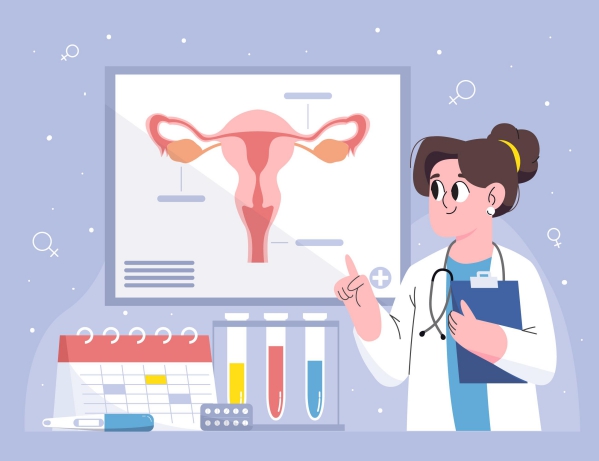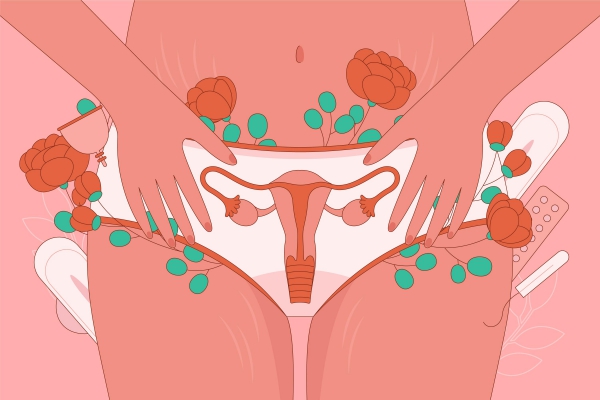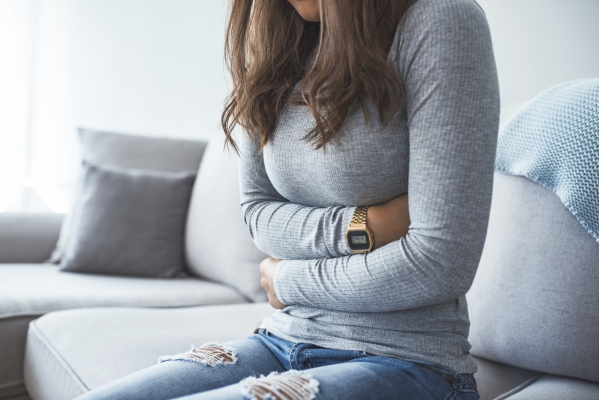What is pelvic inflammatory disease?
Pelvic inflammatory disease (PID) is an infectious and inflammatory disease of the female genital tract. It affects the uterus, fallopian tubes and other structures found in the pelvis. It begins as an infection located in the vagina which ascends to the upper structures of the female genital tract. The infection may later on spread to abdominal organs if left untreated.
PID usually occurs in 2 stages. During the first stage, the pathogen enters the vagina and cervix and causes infection. It enters during sexual intercourse and may not cause any symptom during this stage. During the second stage of the disease, the infection progresses up to upper structures of the female genital tract. It is accompanied by inflammation of the pelvic structures.
Since PID is caused by sexually transmitted infections, it is a condition that is most likely to occur in sexually active women. Around 4.4% of women who are sexually active eventually end up with PID. The Centre for Disease Control and Prevention have estimated that around 1 million women around the world have at least once been diagnosed with PID during their lifetime.
What are the causes and risk factors of pelvic inflammatory disease?
PID is most commonly caused by pathogens known as Chlamydia trachomatis and Neisseria Gonorrhoeae which are infections that can be transmitted through sexual contact. It can also be caused by other organisms such as Gardnerella vaginalis, amongst others. However, in several cases, it has been found that PID is caused by several pathogens at the same time. This is known as a polymicrobial disease.

You are at increased risk of having PID if you have:
- Multiple sexual partners, especially if no protection is used during sex
- A prior history of sexually transmitted infections
- A history of sexual abuse
- Had gynaecologic surgical procedures
- An intrauterine device as a means of contraception
What are the symptoms of Pelvic inflammatory disease?
In some cases, PID does not present with any symptoms. However, some women may experience the following:
- Abdominal pain in the lower abdomen
- Abdominal pain worsening with sexual intercourse or abrupt movement
- Pain starting during or shortly after your menses
- Fever
- Bleeding after sex
- Bleeding in between periods
- Increased urinary frequency
- Abnormal discharge from vagina
How is the diagnosis of Pelvic inflammatory disease made?
To make the diagnosis of PID, your doctor will start by asking you a series of questions to know more about your symptoms. He/she will then proceed with a physical examination. This will involve your doctor inserting his/her fingers into your vagina. This is called a pelvic examination.
If your doctor suspects that you may have PID, the following tests will have to be done to complete the evaluation:
- Pregnancy test
- Examination of vaginal discharge under microscope
- Tests to identify the presence of Chlamydia and Gonorrhoeae
- Human immunodeficiency virus (HIV) test
- Tests for syphilis

Imaging tests of the pelvis may have to be done if the presence of a pelvic abscess is suspected. An ultrasound is an imaging technique that uses sound waves to recreate the image of pelvis structures.

How is Pelvic inflammatory disease treated?
The goals of treatment of PID is to relieve symptoms, cure the infection and decrease the risk of having long term complications. Treatment of PID includes taking antibiotics. In most cases, antibiotics alone is sufficient to treat the condition. In some cases, it may be necessary to know the exact organism that is causing the disease in order to adjust your antibiotic therapy to target the particular pathogen. If oral antibiotics is not sufficient to improve your condition, you may have to get admitted and receive the antibiotics through your veins.
If you have a sexually transmitted infection, it is important that your partner gets treated too as you will get the infection back if you have sexual intercourse. Your partner may be infected without having any symptoms, therefore, testing is warranted.
It is important to avoid having sexual intercourse during the course of the treatment and until you no longer have any symptoms.

Despite treatment, it is impossible to reverse scarring that has already been made in the female reproductive tract.
Complications of Pelvic inflammatory disease
The main complications arising from PID include the following:
- Long standing pain in the pelvis: This occurs in about 25% of women with PID. Inflammation of pelvic structures may cause them to stick with each other leading to adhesions. These adhesions result in chronic pain in the pelvis.
- Inability to have children: Inflammation in the pelvis structures can result in adhesions and scarring of the female reproductive system. The more frequent you get infected, the higher the risk of infertility.
- Ectopic pregnancy: This is when the fertilised egg implants outside of the uterus. This is a life threatening condition and results in the death of the baby. You are at increased risk of having an ectopic pregnancy if you have PID as it occurs in 15-50% of women with the condition. This is due to the damage caused by infection and inflammation of the fallopian tubes.
How can Pelvic inflammatory disease be prevented?
It is important for you to take necessary precautions during sex to avoid getting sexually transmitted infections that can potentially lead to PID. It is advised to use condoms and limit the number of sexual partners you have.
 If you suspect having a sexually transmitted infection, make sure to get tested and initiate treatment as soon as possible. Your partner should also be tested and treated.
If you suspect having a sexually transmitted infection, make sure to get tested and initiate treatment as soon as possible. Your partner should also be tested and treated.
The best way to avoid having PID is abstinence.
Prognosis
Early diagnosis and treatment decreases the risk of having long term complications such as infertility. About 25% of people with PID will end up with long-term complications. The risk increases with the number of PID episodes.

Source:
Vanthuyne, A. and Pittrof, R., 2016. Diagnosis and treatment of pelvic inflammatory disease. Prescriber, 27(10), pp.47-50.
Ross, J., 2020. Pelvic inflammatory disease: Clinical manifestations and diagnosis
Wiesenfeld, H., n.d. Pelvic inflammatory disease: Treatment in adults and adolescents
Peipert, J., n.d. Long-term complications of pelvic inflammatory disease
Tough DeSapri, K., 2019. Pelvic Inflammatory Disease




